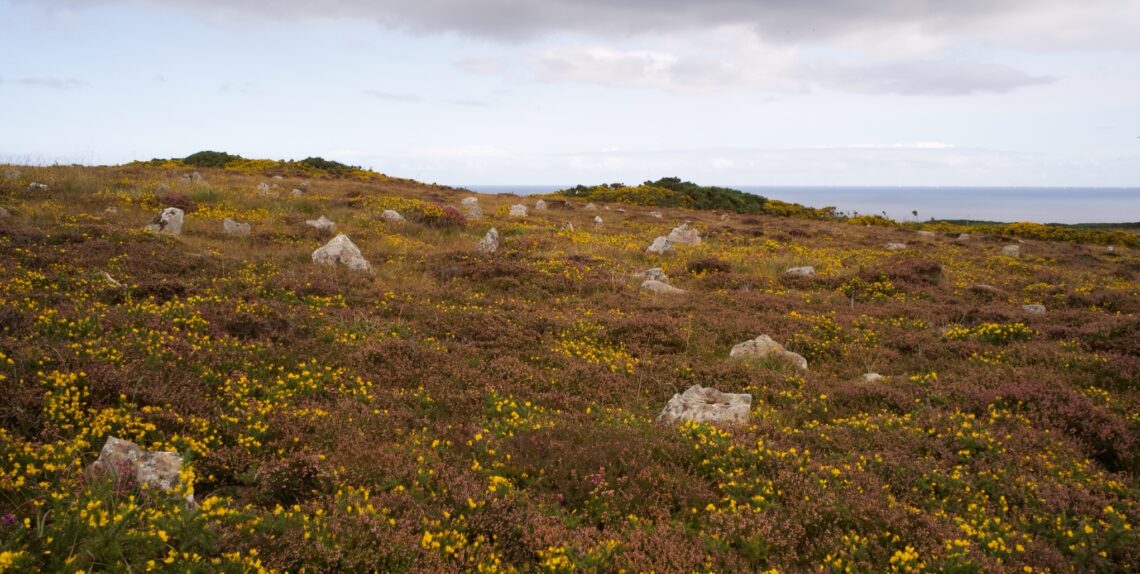
The Hill o’ Many Stanes
We were on our way up towards Wick a couple of years ago, driving along the A99 and admiring the stunning views out across the North Sea, when I noticed a brown signpost pointing up a minor road. It said ‘Hill o’ Many Stanes’.
This triggered something in my memory – a photo that I’d seen a long time ago, and the hint of a mystery. We couldn’t just drive past.
The road led slightly uphill, flanked on either side by thickets of gorse that gave way to open farmland. Towards the brow of the hill was a small lay-by, where we got out and went through a wooden gate. And there we were: on the aptly-named Hill o’ Many Stanes.
Rising above the low-growing gorse and heather were the pale ‘heads’ of scores of stones. It was clear that most had been arranged in a standing position, and they had been laid out in rows, running down the hillside in the direction of the sea. None was more than about two or three feet tall, but the effect was extraordinary.
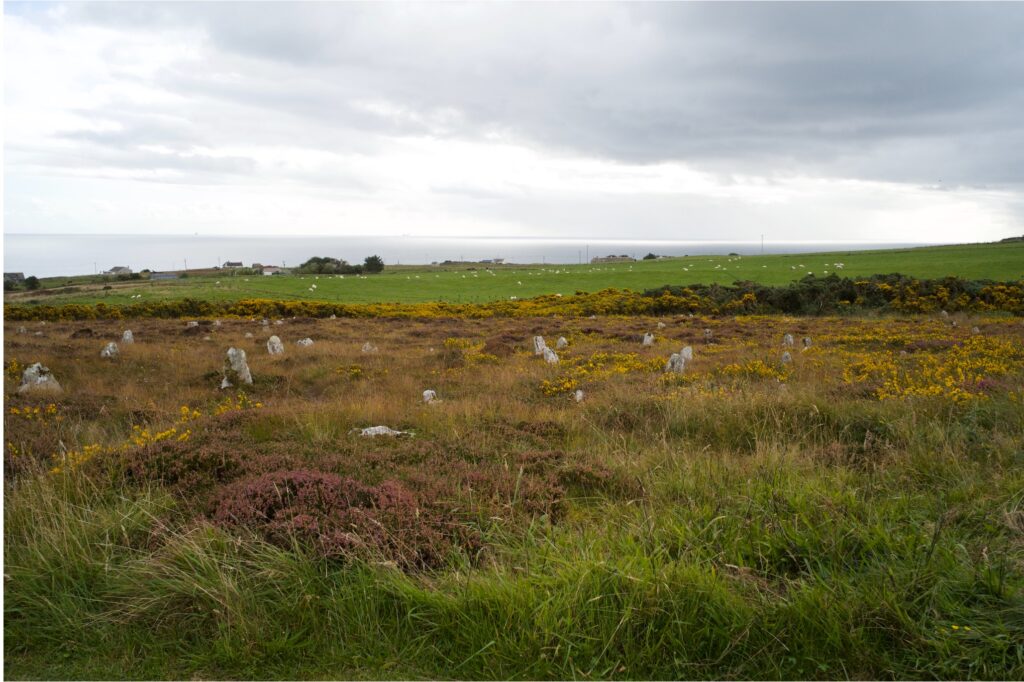
With most other megalithic sites – stone rows and circles – the size and scale is what strikes you first, and you lose yourself in the unsolvable puzzle of how they were transported and raised. But here, your first thought is: why? What on earth happened here? There’s a sense that the ground itself is keeping a secret.
On that mild September morning, it almost looked as if a field of campers had slept there overnight and were raising their bleary heads at the sound of intruders.
Trying to make sense of the Hill o’ Many Stanes will only lead you into a labyrinth. Graves, you might think, because our eyes are accustomed to seeing gravestones around a village church. But these stones seem too close together to mark traditional graves, and so far no traces of cremated burials have been found.
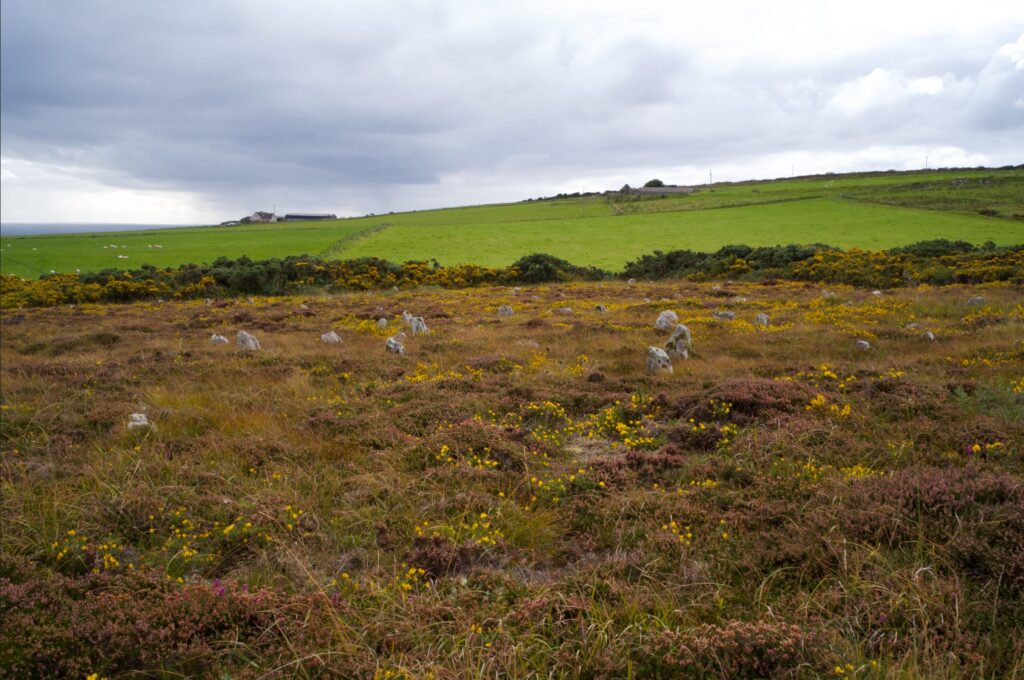
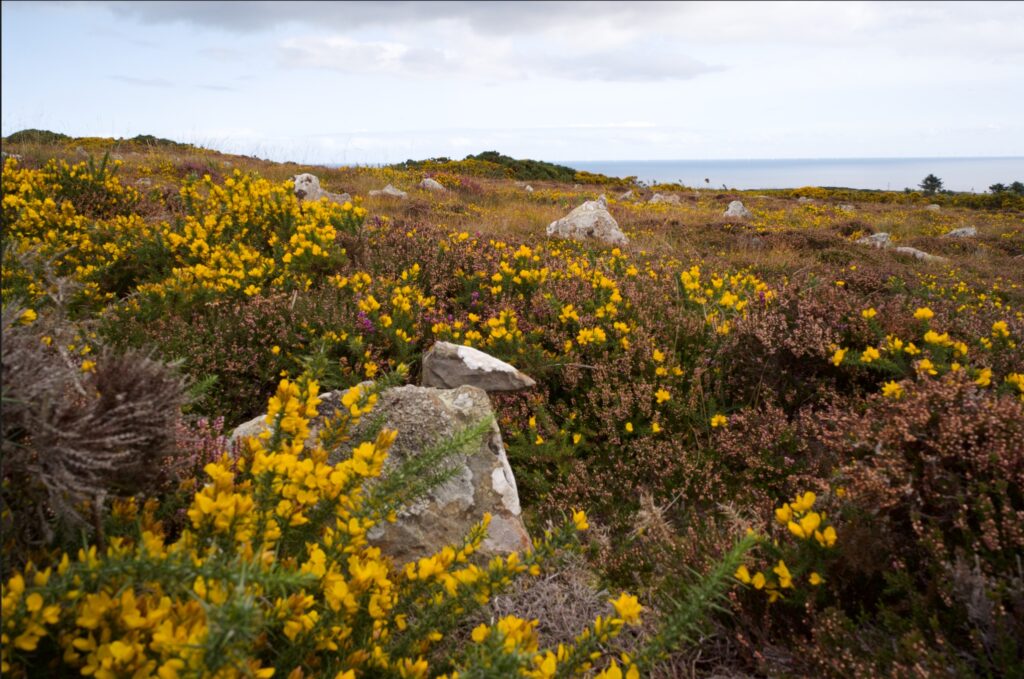
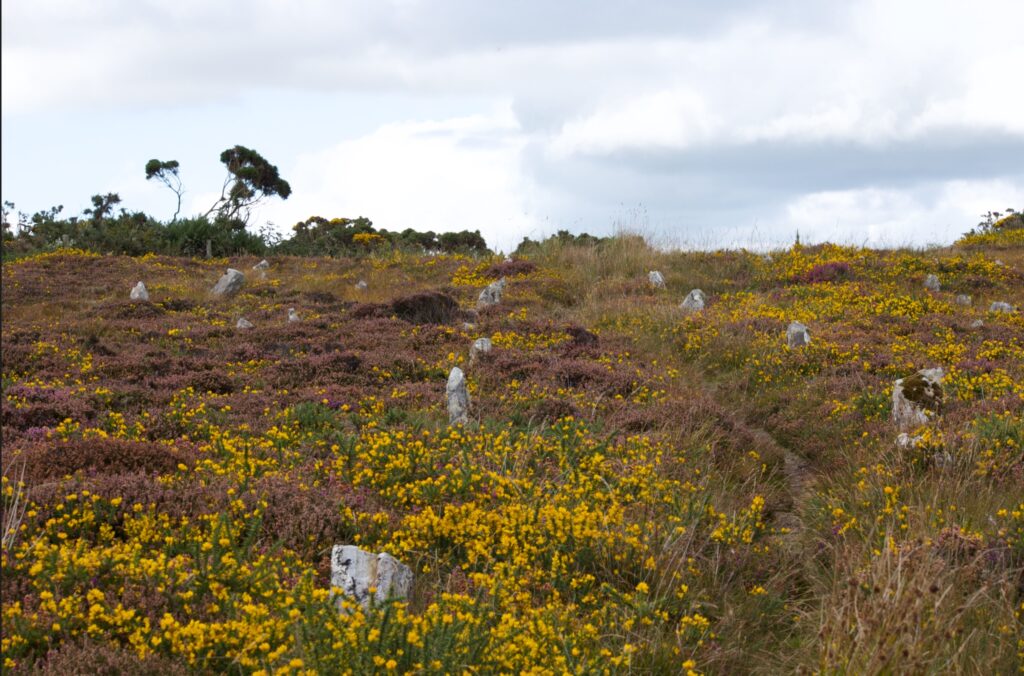
In official sources, the site is described as being around 4,000 years old, placing it in the late Neolithic or early Bronze Age. In total, around 200 stones, mostly slab-like in profile, are arranged in 22 roughly parallel rows, fanning out very slightly towards the lower end of the field. Around the bases of some of them, smaller stones have been packed in order to set them upright. Others are recumbent, which may or may not be a result of later toppling.
Until sometime in the fairly recent past, the site may have extended further across the hillside. Writing in 1886, Joseph Anderson, an eminent 19th century Scottish antiquarian, observed: ‘The total number of stones now standing in this group exceeds four hundred.’ More recent surveyors, looking at lines that may have been truncated, have suggested that up to 600 stones may once have stood here.
The Hill o’ Many Stanes is not unique: there are other stone rows in Britain, but those that comprise multiple rows seem to occur only in Caithness and Sutherland. The archaeologist Alexander Thom believed that these stone rows were Bronze Age observatories, designed to track the movements of the moon.
I’m actually writing this blog post as a partial solar eclipse is happening, although you wouldn’t know it in the grey cloud-laden skies of Argyll. It makes me wonder if these stones marked the places for people to stand, to watch something… but there are so many other possibilities, and your imagination gets fired up with increasingly wonderful and outrageous theories. A setting for a children’s game? A grid of Earth energy lines? Sight markers to guide Neolithic airships coming in to land? While I was standing there and pondering, I noticed a windfarm far out at sea: rows of windmills, all facing in the same direction, generating power.
An information sign at the site offers a more pragmatic alternative: successive generations of a community, each adding a stone (or two, or three) to commemorate their ancestors. The idea of stones being erected ‘in memoriam’ brings us back to the country graveyard.
Local folklore tells the story of a farmer who stole one of these stones to build a kiln (another version says he used it as a lintel for his fireplace). But when a fire was lit beneath it, the stone itself burst into flames. The farmer was so scared that he replaced the stone in the exact spot where it had once stood.
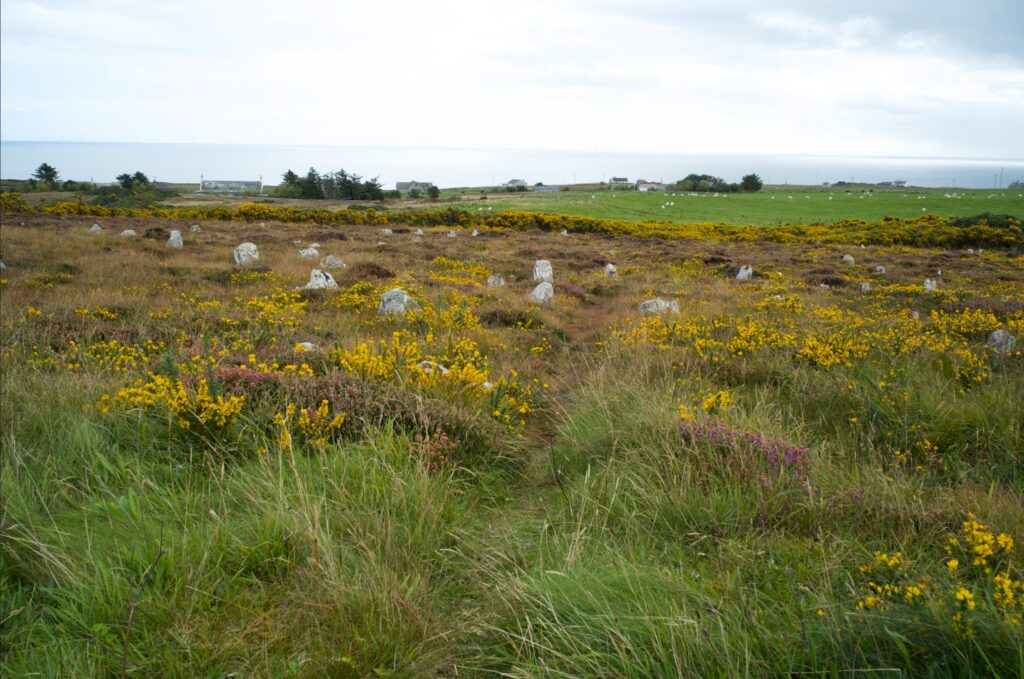
Judging by the number of stones that are estimated to have been lost or removed over time, this story didn’t deter all the stone-robbers. Admittedly, they are more portable than most megalithic monuments, making them a very tempting source of material for walls and buildings. But there are enough left for us to sense their strangeness. Walking between the rows, I felt slightly bewildered, as if I should know their secret, but I didn’t. And meanwhile there were stonechats flitting about in the gorse, the possible descendants (if you think about it) of the birds who watched them being built.
Reference
- Historic Environment Scotland
- Canmore
- The Prehistoric Society (PDF)
- British Folklore
- The Stone Rows of Great Britain
- Joseph Anderson, Scotland in Pagan Times: The Bronze and Stone Ages (1886)



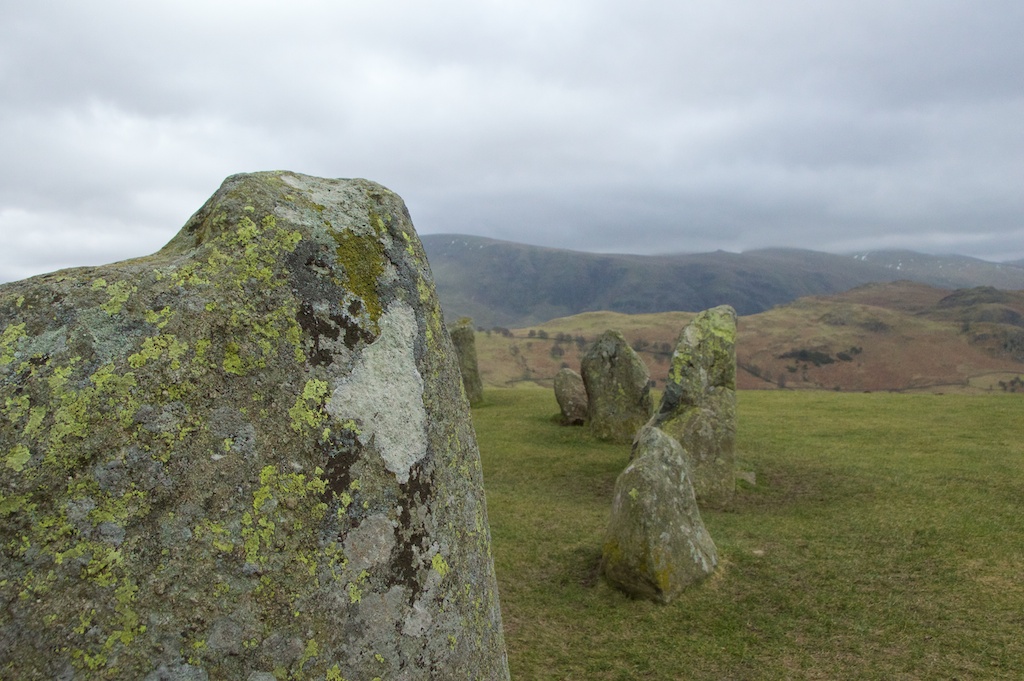

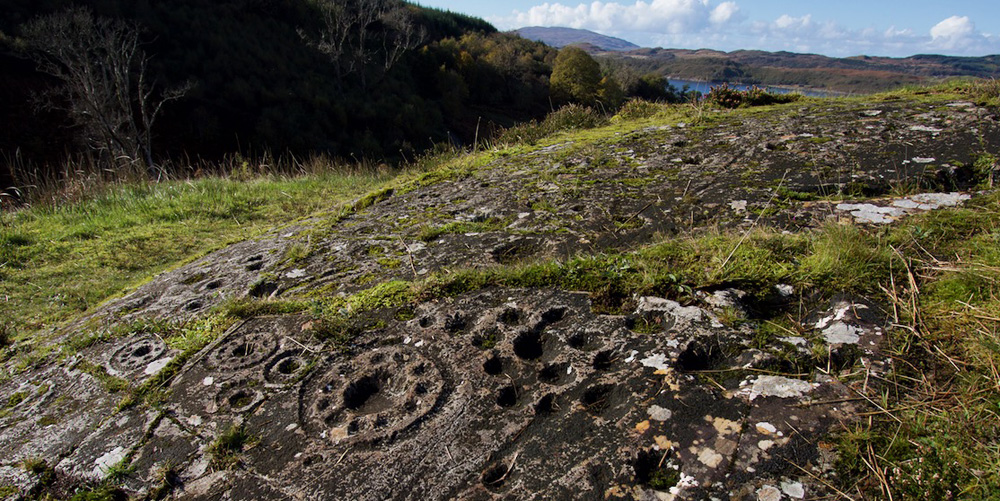
8 Comments
The Historian
Thank you!
Cathy Murray in Comrie, Perthshire
Jo Woolf
You’re very welcome, Cathy.
sallysmom
What an interesting place. I can just imagine those people of long ago being there lifting and placing the stones.
Jo Woolf
I know – in one way, it seems more accessible to us now because we can almost imagine ourselves creating it – the stones don’t look impossibly huge, unlike Stenness, for example. But why, is the eternal question!
Finola Finlay
Great site! I like the alignment theory.
Jo Woolf
It’s amazing, Finola. I’d be interested to know if you have anything similar in Ireland, and if so, what the theories about it are.
Robert Turner
We came across the Hill o Many Stanes on our visit in 2013. Your story took me right back there ,so thank you. It was such a curious place. Understated and amazing, such unimpressive little individual stones that created an almost overwhelming feeling.and site. An in a way that was in fitting with the site we just happened to come across it. Like a little unexpected surprise while traveling in a land of many gems.Thanks again for taking me back there.
Jo Woolf
You’re most welcome and I’m glad you enjoyed it! I think that’s part of the curiosity of this place – you don’t necessarily make a special journey to get there, like you would with Calanais or Stonehenge, but you just drop by when you’re passing, and then it strikes you as being so totally different from anything you’ve seen before. For us, the contrast between the ‘Many Stanes’ and the impressive sites on Orkney like Stenness and Brodgar couldn’t have been greater, but they all have that aura about them, of some wisdom that’s just out of reach. Thank you for sharing your own memories of it.